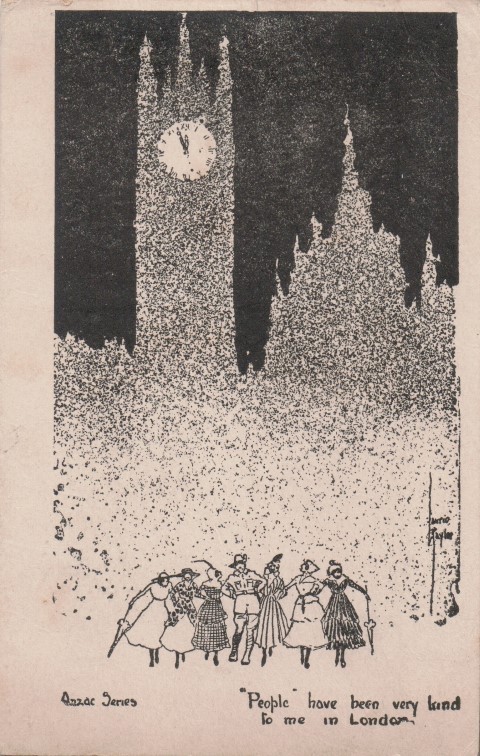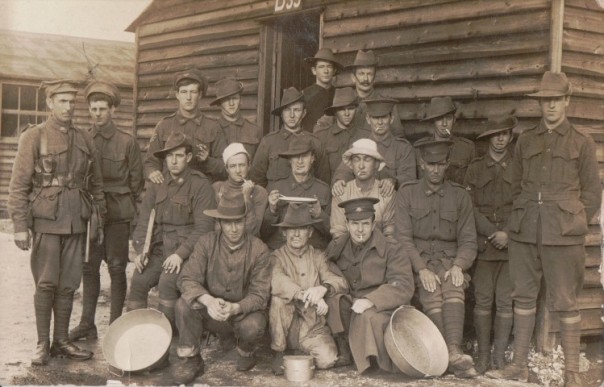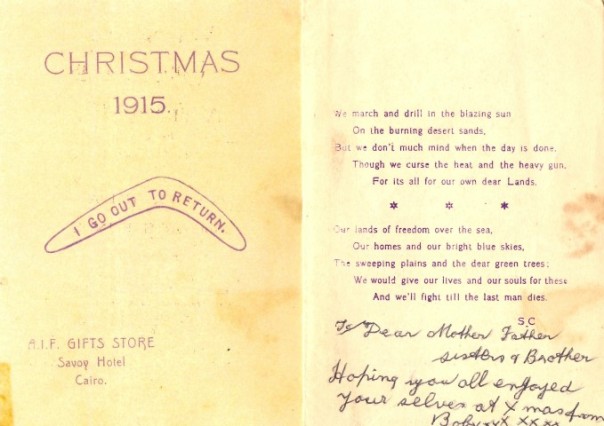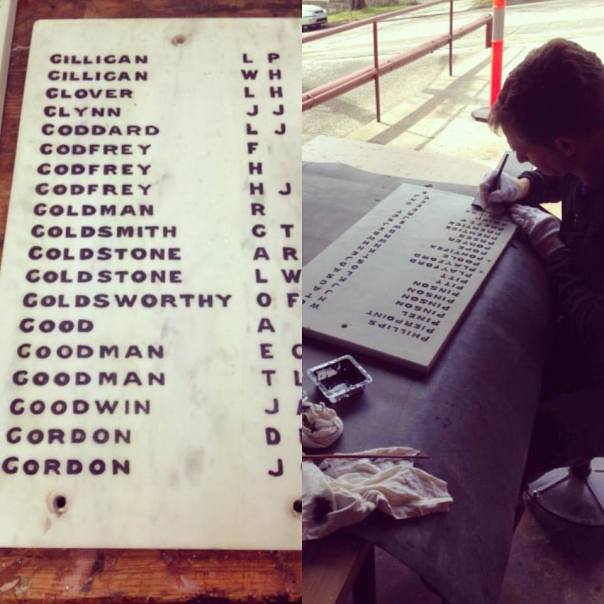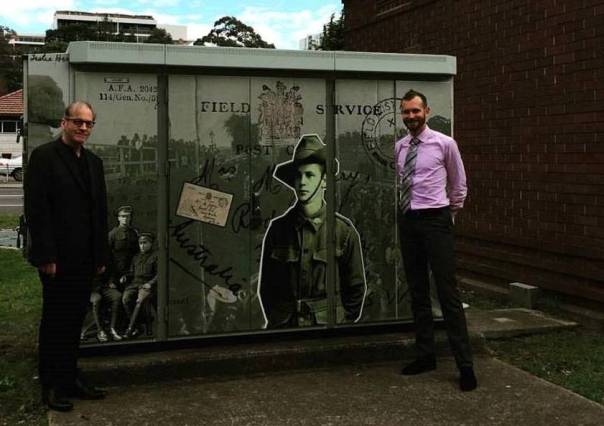Blog Archives
Remembering the fallen
Local services marking Anzac Day this year include special recognition of the Battle of Bullecourt at the Breakfast Point War Memorial.
Of the many First World War battles those at Bullecourt in northern France were amongst the most horrific. Four experienced Australian divisions of I ANZAC Corps were part of the British 5th Army under Sir Hubert Gough. The general wanted to attack at Bullecourt to support an important offensive by the adjoining British 3rd Army to the north and the French Army further to the south. However poor planning resulted in heavy losses. The first attack launched at Bullecourt on 11 April 1917 was a disaster. Despite this a further attack across the same ground was ordered for 3 May. The Australians broke into and took part of the Hindenburg Line but no important strategic advantage was ever gained. In the two battles the AIF lost 10,000 men.
The Breakfast Point War Memorial lists the names of eight local men who died at Bullecourt.
The photograph shows the unveiling of the Australian Gas Light Company (AGL) war memorial by Sir Dudley de Chair, Governor of NSW in 1926. It has since been replaced by the Breakfast Point memorial.
Greetings from afar
During the First World War the Australian Comforts Fund co-ordinated the distribution of small gifts to soldiers to make their life a little more pleasant.
It was formed in August 1916 and co-ordinated the efforts made by various existing State based patriotic funds. In the field, its activities were overseen by commissioners who held honorary rank as officers. Local Drummoyne Alderman, Mayor and politician, Thomas Henley was one such commissioner who visited Egypt, France and Britain in his work for the Australian Comforts Fund. His own son, Lieutenant Harold Leslie Henley was killed in action on 15 August 1916 in France.
This postcard was distributed to soldiers by the Australian Comforts Fund at Christmas 1916. It was sent by Private Henry George Jeffery to his family in Five Dock. Harry was killed in action on 4 October 1917 in Belgium.
The postcard artwork is by Laurie Tayler (Lawrence B. Tayler), an Australian artist and cartoonist of the period. The gentle humour of the postcard (‘People have been very kind to me in London’) belies the horror of the First World War experience.
Remembrances of war
Throughout the City of Canada Bay there are many memorials, large and small, dedicated to the memory of local men and women who served our country in war.
Local Studies is custodian of two memorials to those who served in the First World War, the Drummoyne War Service Record, which records those who served from the Drummoyne area and the Lysaght Bros Roll of Honour, which records the names of workers from the Lysaght factory at Chiswick who served .
The beautiful memorial, above, pays tribute to nine soldiers from the Five Dock Methodist Church (now Five Dock Uniting Church) who did not return from the First World War. Undoubtedly it was crafted with love and compassion.
Images of some of the war memorials in the City of Canada Bay can be seen on flickr.
An album of memories
A small display in the Local Studies area at Concord Library provides a glimpse into the story of two brothers who served in the First World War.
Margaret Jeffery lovingly collected the letters and postcards sent by her sons during the First World War in an album. One hundred years later they provide a very special glimpse into the lives of the soldiers and the conditions they experienced. Private Henry (Harry) Jeffery was killed in action in Belgium on the 4 October 1917, aged 19 years. His brother, Private Robert (Bob) Jeffery was only 15 years 8 months when he enlisted. He served in the Middle East until the Army found out he was underage and sent him back to Australia.
The photograph of soldiers, above, includes Harry Jeffery (second from the left, marked with a cross). The photograph may have been taken during training in Britain. The hut in the background would appear to be an army mess or kitchen, judging by the pots and utensils in the picture.
The Jeffery Album was generously donated to Local Studies by Christine Tracy, a descendant of the brothers, in 2014.
Brothers in arms
While brothers from the same family often enlisted in the First World War, it was uncommon to see four brothers do so. At Drummoyne the Erickson brothers, Albert Victor, Roy Robert, Bertie Theodore and George Peter all enlisted to serve.
Educated at Drummoyne Public School, the Erickson brothers were keen sportsmen. All four swam with the Drummoyne Amateur Swimming Club, with Bertie (known as ‘Bert’) and George also playing in the Drummoyne Water Polo team. Albert’s other enthusiasm was Australian Rules Football, playing first for Drummoyne he then captained the Western Central team. Bert was also a rower with the Balmain Rowing Club.
Albert Victor Erickson, enlisted in August 1915 and served with the 3 Battalion, later transferring to the 45 Battalion. Roy Robert Erickson enlisted in July 1915 and served with the 18 Battalion. Tragically, Albert and Roy were killed in action within a day of one another in the Battle of Pozieres in France. Roy died on 5 August 1916, aged 19 years while Albert died on 6 August 1916, aged 23 years.
The photograph of the memorial plaques commemorating Albert Victor and Roy Robert was kindly donated to ‘Canada Bay Connections’ earlier this year by Ian Vinall.
Christmas 1915
In 1915 Private Robert (Bob) Jeffery sent this simple card from Cairo to his family in Five Dock. It was printed on lightweight paper in Cairo and distributed to soldiers by the Australian Comforts Fund. At home it was lovingly preserved by his mother Margaret Jeffery in an album of postcards and letters sent by her two sons and nephew while serving in the First World War.
Bob was only 15 at the time of his enlistment. On Christmas day 1915 he wrote to his family,’I hope you all enjoyed your Xmas dinner, because I did, I had some roast turkey, boiled cabbage & roast potatoes, also some pudding and the day before yesterday most of us got our Xmas gifts from the Australian Comforts Fund. I got a billy can full of tobacco, cigarettes, cigars and matches, chocolate…writing paper, a plum pudding and a little square box with a dozen postcards… I don’t think I’ll go short of smokes for a while.’
After serving in the Middle East, Bob, like the message on the card, returned to his family in Australia.
Restoring their names
Erected in 1921, the Concord War Memorial has been the focal point for Anzac Day services for over ninety years.
Some 600 men and women from the Concord area enlisted to serve in the First World War, a remarkable number considering the population at the time is estimated to have been less than 11, 000.
At present conservation work is being carried out on the marble tablets so the names will be legible once again. Thus the original intention of the memorial ‘to perpetuate the memory of our nurses, sailors and soldiers who enlisted in the Great War 1914-1919’ will be fulfilled.
The work will be completed by Remembrance Day, 11 November 2015.
Rhodes art work remembers local soldiers
A new art work by Olev Muska at McIlwaine Park commemorates the service of local soldiers during the First World War.
Olev (left) has drawn on images from the Local Studies photographic collection, Canada Bay Connections and the Australian War Memorial to create a fascinating work. Against the background photograph of the unveiling of the Rhodes Honour Roll in 1919 can be seen images of Walter Brooks, the Seabrook brothers and a Field Post Office card sent by Harry Jeffery to his mother before going into battle.
The art work ensures that those who served in the First World War are remembered as ‘More than just a name’.
A camera on Gallipoli
The Australian War Memorial’s digital exhibition ‘A camera on Gallipoli’, featuring First World War photographs taken by Sir Charles Ryan, can now be viewed at Concord Library.
In 1914, at the age of 61, Sir Charles Ryan was appointed consulting surgeon to the AIF, embarking from Melbourne in October to the Middle East, then on to Gallipoli.
‘A camera on Gallipoli’ showcases a series of 39 candid photographs. The Director of the Australian War Memorial, Dr Brendan Nelson, says ‘Charles Ryan’s photographs capture the reality behind the 1915 Gallipoli campaign, depicting a unique and often harsh view of our soldiers’ experiences’.
Charles Ryan led a remarkable life. He served as a doctor with the Turkish army in 1877–78, treated Ned Kelly at Glenrowan, was a leading Melbourne surgeon and gave long service as a senior military officer.
The digital exhibition is a centenary initiative supported by the Concord RSL to commemorate the centenary of the First World War. It can be viewed at Concord Library until Sunday, 3 August 2015.
St Bede’s Baseball Club, 1914
While baseball was first played in Australia in the nineteenth century, it was the visit of the American Fleet in 1908 that particularly boosted interest in the game. In that year baseball first began to be played in NSW schools.
By 1914 St Bede’s (Anglican Church), Drummoyne had a well organised baseball team. Players in the photograph, above, were back row: A. Norman (Pitcher), H. Kay (1st Base), L. Kay (Catcher), Honorary Treasurer E. Gordon (Centre Field); second row: F. Hall (3rd Base), A. E. Kelshaw (Short Stop), Captain A. Mackenzie (2nd Base), Vice Captain and Honorary Secretary E. Stutchbury (Right Field); front row: E. Boon (Left Field), A Parsons (Centre Field).
It appears that at least six of the young men enlisted in the First World War. Brothers Harold Brooks Kay and Leslie Frank Kay, Ernest Gordon, Frederick Poole Hall, Albert Edward Kelshaw and Eric William Stutchbury. Ernest Gordon was killed in action in 1917 but the others all returned to Australia after the war ended. Eric Stutchbury became a Major in the 55 Battalion and was highly decorated, being awarded a Military Cross with Bar.
The photograph of St Bede’s Baseball Club was recently donated to Local Studies by Major Stutchbury’s son, Kevin.

